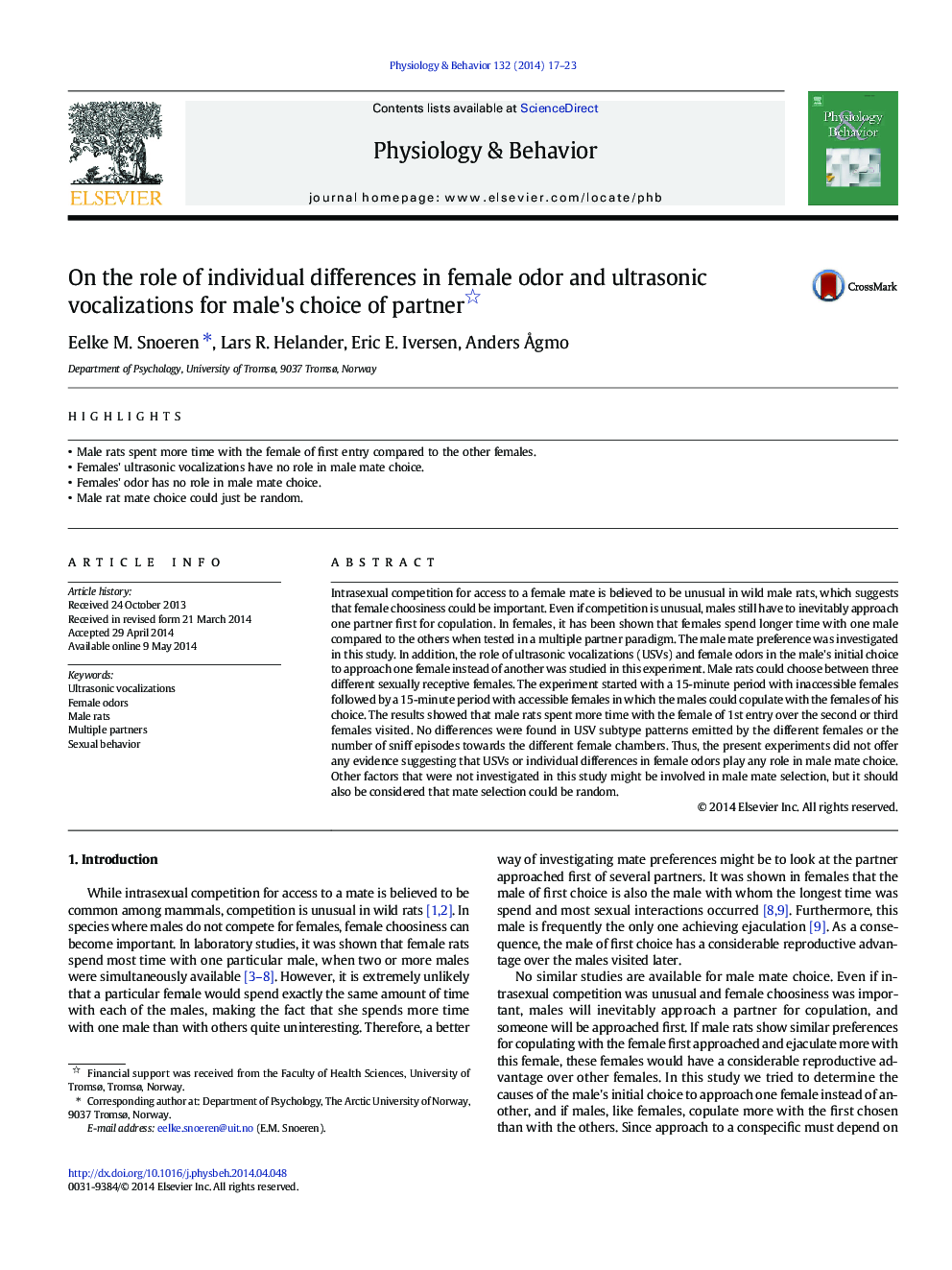| Article ID | Journal | Published Year | Pages | File Type |
|---|---|---|---|---|
| 2844274 | Physiology & Behavior | 2014 | 7 Pages |
•Male rats spent more time with the female of first entry compared to the other females.•Females' ultrasonic vocalizations have no role in male mate choice.•Females' odor has no role in male mate choice.•Male rat mate choice could just be random.
Intrasexual competition for access to a female mate is believed to be unusual in wild male rats, which suggests that female choosiness could be important. Even if competition is unusual, males still have to inevitably approach one partner first for copulation. In females, it has been shown that females spend longer time with one male compared to the others when tested in a multiple partner paradigm. The male mate preference was investigated in this study. In addition, the role of ultrasonic vocalizations (USVs) and female odors in the male's initial choice to approach one female instead of another was studied in this experiment. Male rats could choose between three different sexually receptive females. The experiment started with a 15-minute period with inaccessible females followed by a 15-minute period with accessible females in which the males could copulate with the females of his choice. The results showed that male rats spent more time with the female of 1st entry over the second or third females visited. No differences were found in USV subtype patterns emitted by the different females or the number of sniff episodes towards the different female chambers. Thus, the present experiments did not offer any evidence suggesting that USVs or individual differences in female odors play any role in male mate choice. Other factors that were not investigated in this study might be involved in male mate selection, but it should also be considered that mate selection could be random.
